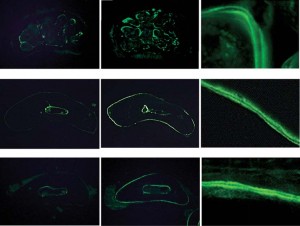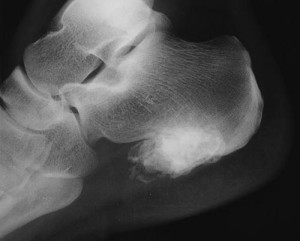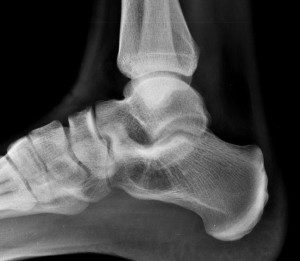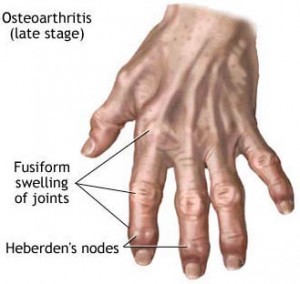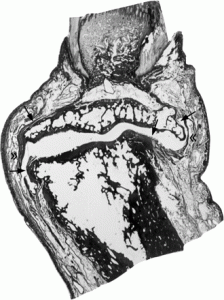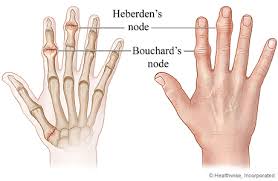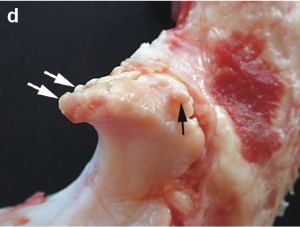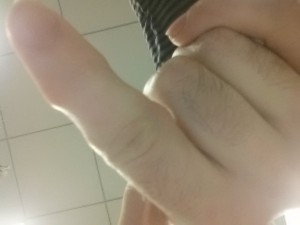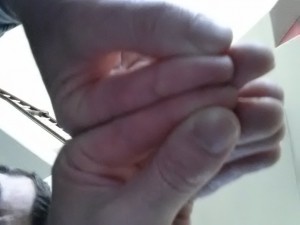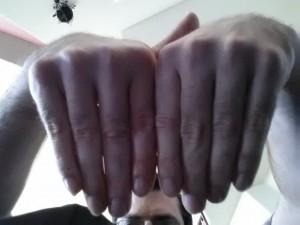Not a lot on this study relating to longitudinal bone growth. The important takeaway is evidence that LSJL can cause bone degradation which would be an important part of the process for neo-growth plate formation.
Effects of surgical holes in mouse tibiae on bone formation induced by knee loading.
“Loads applied directly to the knee (knee loading) have induce anabolic responses in femoral and tibial cortical bone. In order to examine the potential role of intramedullary pressure in generating those knee loading responses, we investigated the effects of drilling surgical holes that penetrated into the tibial medullary cavity and thereby modulated pressure alteration. Thirty-nine C57/BL/6 female mice in total were used with and without surgical holes, and the surgical holes were monitored. The left knee was loaded for 3 days[at 5Hz at 0.5N for 3 min a day], and the contralateral limb was treated as a sham-loaded control. Mice were sacrificed 2 weeks after the last loading. Although the surgical hole induced bone formation in both loaded and non-loaded tibiae, due to regional and systemic acceleratory phenomenon the anabolic effect of knee loading was substantially diminished. Without the holes, knee loading significantly elevated cross-sectional cortical area, cortical thickness, mineralizing surface, mineral apposition rate, and bone formation rate on the periosteal surface. For example, the rate of bone formation was elevated 2.1 fold (middle diaphysis–50% site from the knee along the length of tibiae) and 2.7 fold ( distal diaphysis–75% site). With the surgical holes knee loading did not provide significant enhancement either at the 50% or 75% site in any of the histomorphometric measurements. Alteration of intramedullary pressure is necessary for knee loading to induce bone formation in the diaphysis{it may also be necessary to induce longitudinal bone growth} .”
Now they do say however that the drilling of the epiphysis did induce a response of the bone just not the same adaptations as it did without drilling. Note that drilling was used rather than microfracture. Although we can’t say for sure how surgical holes would affect LSJL’s effects on longitudinal bone growth.
“On days 2 and 6 after the last loading, the mice were given an intraperitoneal injection of calcein” and the results are shown below. Calcein is used as a Ca2+ and Mg2+ indicator which are two proteins that are strong components of bone.
Without drilling:
” knee loading induces alteration of intramedullary pressure in the femoral bone cavity and this alteration is synchronous to the loading frequency in Hz”<-The higher the frequency, the greater the intramedullary pressure. I’m not sure exactly how to alter the frequency via LSJL but I believe that clamping/release from clamping/and then clamping again.
“cyclic deformation of the epiphysis alters pressure in the medullary cavity and the pressure gradient induces fluid flow in the diaphysis “<-Although fluid flow which can increase nutrient supply to chondrocytes, the number of changes induced to the growth plate via LSJL cannot be explained by just an increase in nutrient.
“In the presence of surgical holes, it is expected that the gradient is not adequately established because of incomplete pressure sealing.”
“A pressure gradient, elevated by venous ligation, was shown to increase interstitial fluid flow and this flow-mediated bone adaptation was considered to be independent of mechanical strain ”
“During knee loading no bruising or other damage was detected at the loading site, and after loading mice did not show a weight loss or a diminished food intake.”
“Osteoblast specific factor 2 (periostin) is preferentially expressed on periosteum and considered to play a role in the recruitment and attachment of osteoblast precursors in the periosteum”
“knee loading herein induces approximately 30 μstrain at the site of bone formation and the number of loading cycles per day is 900 for 3 days”



